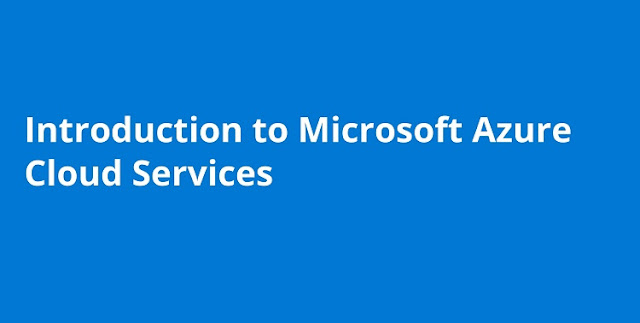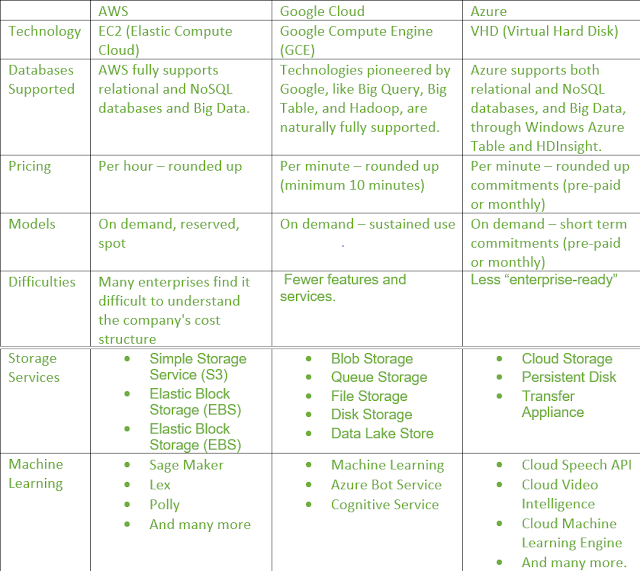What is Azure?
Azure is Microsoft’s cloud platform, just like Google has it’s Google Cloud and Amazon has it’s Amazon Web Service or AWS.000. Generally, it is a platform through which we can use Microsoft’s resource. For example, to set up a huge server, we will require huge investment, effort, physical space and so on. In such situations, Microsoft Azure comes to our rescue. It will provide us with virtual machines, fast processing of data, analytical and monitoring tools and so on to make our work simpler. The pricing of Azure is also simpler and cost-effective. Popularly termed as “Pay As You Go”, which means how much you use, pay only for that.
Azure History
Microsoft unveiled Windows Azure in early October 2008 but it went to live after February 2010. Later in 2014, Microsoft changed its name from Windows Azure to Microsoft Azure. Azure provided a service platform for .NET services, SQL Services, and many Live Services. Many people were still very skeptical about “the cloud”. As an industry, we were entering a brave new world with many possibilities. Microsoft Azure is getting bigger and better in coming days. More tools and more functionalities are getting added. It has two releases as of now. It’s famous version Micorosft Azure v1 and later Microsoft Azure v2. Microsoft Azure v1 was more like JSON script driven then the new version v2, which has interactive UI for simplification and easy learning. Microsoft Azure v2 is still in the preview version.
How Azure can help in business?
Azure can help in our business in the following ways -
Read More: DP-900: Microsoft Azure Data Fundamentals
◉ Capitaless: We don’t have to worry about the capital as Azure cuts out the high cost of hardware. You simply pay as you go and enjoy a subscription-based model that’s kind to your cash flow. Also, to set up an Azure account is very easy. You simply register in Azure Portal and select your required subscription and get going.
◉ Less Operational Cost: Azure has low operational cost because it runs on its own servers whose only job is to make the cloud functional and bug-free, it’s usually a whole lot more reliable than your own, on-location server.
◉ Cost Effective: If we set up a server on our own, we need to hire a tech support team to monitor them and make sure things are working fine. Also, there might be a situation where the tech support team is taking too much time to solve the issue incurred in the server. So, in this regard is way too pocket-friendly.
◉ Easy Back Up and Recovery options: Azure keep backups of all your valuable data. In disaster situations, you can recover all your data in a single click without your business getting affected. Cloud-based backup and recovery solutions save time, avoid large up-front investment and roll up third-party expertise as part of the deal.
◉ Easy to implement: It is very easy to implement your business models in Azure. With a couple of on-click activities, you are good to go. Even there are several tutorials to make you learn and deploy faster.
◉ Better Security: Azure provides more security than local servers. Be carefree about your critical data and business applications. As it stays safe in the Azure Cloud. Even, in natural disasters, where the resources can be harmed, Azure is a rescue. The cloud is always on.
◉ Work from anywhere: Azure gives you the freedom to work from anywhere and everywhere. It just requires a network connection and credentials. And with most serious Azure cloud services offering mobile apps, you’re not restricted to which device you’ve got to hand.
◉ Increased collaboration: With Azure, teams can access, edit and share documents anytime, from anywhere. They can work and achieve future goals hand in hand. Another advantage of the Azure is that it preserves records of activity and data. Timestamps are one example of the Azure’s record keeping. Timestamps improve team collaboration by establishing transparency and increasing accountability.
Microsoft Azure Services
Some following are the services of Microsoft Azure offers:
1. Compute: Includes Virtual Machines, Virtual Machine Scale Sets, Functions for serverless computing, Batch for containerized batch workloads, Service Fabric for microservices and container orchestration, and Cloud Services for building cloud-based apps and APIs.
2. Networking: With Azure you can use variety of networking tools, like the Virtual Network, which can connect to on-premise data centers; Load Balancer; Application Gateway; VPN Gateway; Azure DNS for domain hosting, Content Delivery Network, Traffic Manager, ExpressRoute dedicated private network fiber connections; and Network Watcher monitoring and diagnostics
3. Storage: Includes Blob, Queue, File and Disk Storage, as well as a Data Lake Store, Backup and Site Recovery, among others.
4. Web + Mobile: Creating Web + Mobile applications is very easy as it includes several services for building and deploying applications.
5. Containers: Azure has a property which includes Container Service, which supports Kubernetes, DC/OS or Docker Swarm, and Container Registry, as well as tools for microservices.
6. Databases: Azure has also includes several SQL-based databases and related tools.
7. Data + Analytics: Azure has some big data tools like HDInsight for Hadoop Spark, R Server, HBase and Storm clusters
8. AI + Cognitive Services: With Azure developing applications with artificial intelligence capabilities, like the Computer Vision API, Face API, Bing Web Search, Video Indexer, Language Understanding Intelligent.
9. Internet of Things: Includes IoT Hub and IoT Edge services that can be combined with a variety of machine learning, analytics, and communications services.
10. Security + Identity: Includes Security Center, Azure Active Directory, Key Vault and Multi-Factor Authentication Services.
11. Developer Tools: Includes cloud development services like Visual Studio Team Services, Azure DevTest Labs, HockeyApp mobile app deployment and monitoring, Xamarin cross-platform mobile development and more.






0 comments:
Post a Comment